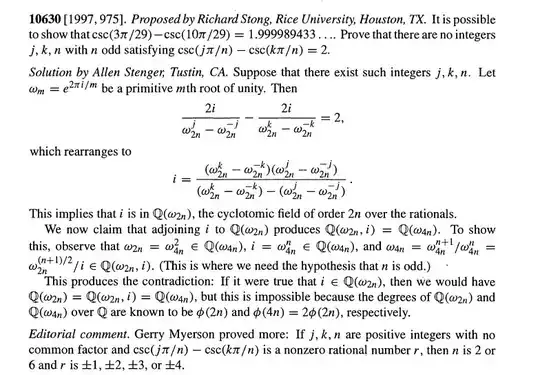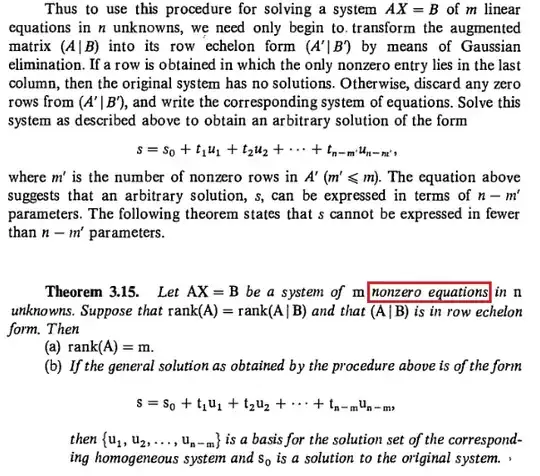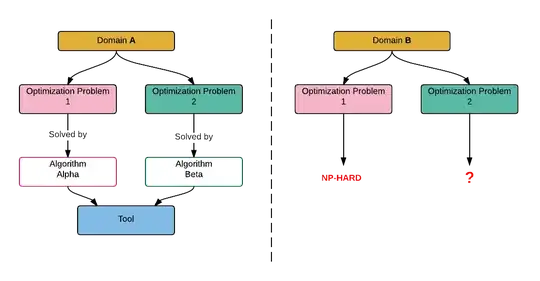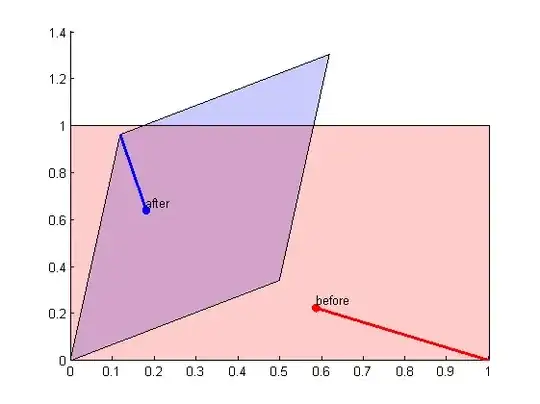Divide a square of side $n$ into any number of non-congruent rectangles. If all the sides are integers, what is the smallest possible difference in area between the largest and smallest rectangles?
This is known as the Mondrian Art Problem. For example, here's a division for a square of size $n=138$. The largest area is 1200, the smallest 1178, with a difference of 22.
So far, corresponding sequence A276523 of known optimal Mondrian dissections have values 2, 4, 4, 5, 5, 6, 6, 8, 6, 7, 8, 6, 8, 8, 8, 8, 8, 9, 9, 9, 8, 9, 10, 9, 10, 9, 9, 11, 11, 10, 12, 12, 11, 12, 11, 10, 11, 12, 13, 12, 12.
$\left \lceil{\frac n{\log(n)}}\right \rceil +3$ seems to be an upper bound for the Mondrian Art Problem.
So far, the differences between that upper bound and the known optimal values comprise A278970. Values to a(65) are verified, with best known values to a(100).
x x 4 2 3 2 2 1 2 0 2 1 1 3 1 1 2 2 2 1
1 2 3 2 1 2 2 3 3 1 2 3 1 1 2 2 3 4 3 2
2 3 3 3 2 3 4 2 4 3 2 4 3 2 3 3 3 3 4 3
3 5 4 4 4 3 1 1 2 1 2 0 1 1 1 2 1 0 1 2
1 2 2 1 1 5 1 3 1 0 1 2 2 0 0 1 1 2 -2 1
From the current best-known solutions, next "4" values are at 176, 241, 245, 289. a(86)=a(139)=5, a(526)=6, a(280)=a(435)=7, a(700)=8, a(324)=a(811)=9, a(138)=a(832)=10.
I have a "14" value for square 758, defect 104 (35964-32860) with 16 rectangles. Can anyone beat the upper bound by more than 14?
The last "hole" in the first 96 squares was for the following, with best known value a(78)=0 $((\left \lceil{\frac {78}{\log(78)}}\right \rceil +3)-(390-369) = 0)$.
Under 105, the only a(99)=-2 has a best known solution going over the upper bound. Is there a better solution for a(99)? I'm not sure why that simple upper bound seems to work so well for a problem with this much chaos. Is it valid?
For eye candy, here are optimal rectangle dissections for squares 3 to 32 optimally packed into a rectangle (method):
In a related problem, A279596 looks at the same problem where rectangles can be re-used if they have a different orientation. $\left \lceil{\frac n{\log(n)}}\right \rceil$ seems to be an upper bound. The distance from that bound is currently known as follows for the first 100 terms. The first 45 terms of A279848 are verified optimal by R. Gerbicz.
x x 1 1 1 1 1 1 2 1 1 1 2 2 1 1 2 1 1 3
1 2 2 2 2 2 2 2 2 1 3 4 4 2 3 3 3 3 3 3
4 4 4 4 3 3 1 2 1 1 5 2 2 1 2 2 1 1 0 3
0 2 1 2 0 0 1 1 1 1 0 1 1 4 1 0 2 0 3 1
4 3 1 1 4 2 3 1 0 4 4 0 1 1 0 0 -2 1 -1 -1
A plot of best known values to a(96) follows.
Here's the best known division of the size 51 square, into rectangles of area 160 to 168, for a defect of 8 (168-160). $\left \lceil{\frac {51}{\log(51)}}\right \rceil=13$, so this division has a quality of 5 (13-8).
From the current best-known solutions, next "4" values are at 74, 81, 85, 90, 91, 137, 150, 280, 435. a(151)=a(700)=5. a(324)=a(811)=6. a(138)=a(832)=7. a(103)=9. a(758)=11. Can anyone beat a quality value of 11? The best known values for squares 97, 99, 100 exceed the upper bound. Are those fixable?
The last "hole" in the first 96 squares was for the following, with best known value a(83)=1 $(\left \lceil{\frac {83}{\log(83)}}\right \rceil -(468-450) = 1)$.
Is upper bound of $\left \lceil{\frac n{\log(n)}}\right \rceil$ valid for this variety of the Mondrian Art problem?
Another packing problem with an odd upper bound is Oblongs into minimal squares.






